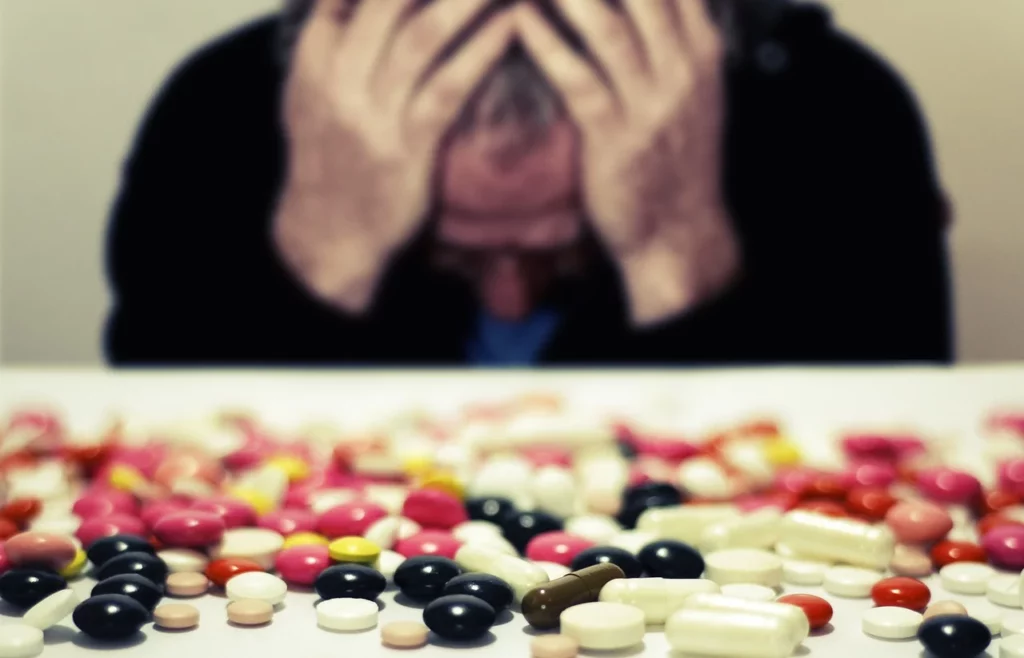Harm reduction is an evidence-based, ethical health philosophy that involves a set of strategies to reduce the harm and improve the quality of life of people engaging in substance use and high-risk behaviours. Abstinence may not be a realistic or desirable goal for all. Harm reduction meets people where they are, recognising the many factors that influence their choices, and is grounded in respect for each person’s dignity and autonomy.
Core Principles and Philosophy of Harm Reduction
Harm reduction is based on principles of care that seeks to treat people with addiction, regardless of their ability to stay abstinent.

Firstly, it begins with the acknowledgement that some drug use or risky behaviours may happen. Rather than ignoring or condemning this behaviour, harm reduction aims to minimise additional harm.This principle recognises individual agency and autonomy, allowing people to make informed choices about their own health and wellbeing.
Secondly, it prioritises the immediate needs of the individual, focusing on things that will give them tangible benefit in the short term, like preventing overdose or reducing the spread of infectious diseases.
Thirdly, it is a pragmatic approach tailored to the individual or community. This means assessing the risks and benefits of different interventions and being willing to adapt as new evidence emerges.
Finally, it recognises that drug use and other risky behaviour are often linked to broader social and economic determinants of health, like poverty, discrimination and trauma. So it advocates for policies and programs that address those underlying determinants of health.
Evidence-Based Strategies in Harm Reduction
There are several evidence-based strategies employed for harm reduction associated with drug use:

Needle and syringe programmes (NSPs) provide sterile injecting equipment to people who inject drugs aiming to reduce the risk of HIV, hepatitis C and other blood-borne viruses.
Opioid substitution therapy (OST), Treatments such as methadone,buprenorphine aim to reduce the harms of opioid dependence including overdose, drug use and criminal activity.
Naloxone distribution programmes provide naloxone which can reverse opioid overdoses, enabling individuals and communities to respond effectively to overdose events,saving lives.
Safe injecting facilities (SIFs) provide a safe and supervised space for people to inject drugs and reduce the risk of overdose, infection and public disorder.
Drug checking services allow people to test the content and purity of their drugs and make more informed choices about their use. These services also provide valuable information on drug trends and emerging risks.
Drug crisis and support hotlines provide immediate confidential assistance for people who use drugs, as well as families looking for assistance. Hotlines can provide support during a crisis, but also provide education and emotional support, with the aim to reduce harm and connect individuals with medical support and care.
Harm Reduction and Substance Use Disorders
While addiction is a chronic complex condition, harm reduction recognises that while abstinence may be a goal for some, harm reduction can offer practical support for those not ready to stop. Reducing harm can help people stabilise drug use, improve health and wellbeing and access treatment and medical services. It also knows relapse is a part of the recovery journey and provides ongoing support and resources including education for preventing overdose, safer drug use and relapse management strategies.
Addressing Trauma and Mental Health Through Harm Reduction
Harm reduction goes beyond substance use to trauma and mental health. People who have experienced trauma are more likely to use substances and engage in risky behaviour as a way to cope with emotional pain. It recognises the importance of processing trauma and improving mental health as part of a comprehensive care plan. This can include providing access to trauma-informed therapy such as Cognitive Processing Therapy or Prolonged Exposure Therapy to process and heal from traumatic experiences. It can also include support for mental health conditions like depression, anxiety and PTSD. Harm reduction also highlights the importance of creating a safe and supportive space for people to talk about trauma and mental health. This means building trust and rapport and providing non-judgmental support.
Harm Reduction in Different Settings

Harm reduction can be done in many places including healthcare facilities, community centres, prisons and schools. Education on safer drug use and overdose prevention can also be included. In community centres, harm reduction can mean drop-in services, peer support groups and counselling. In prisons, harm reduction can mean providing sterile injecting equipment, opioid substitution therapy and education on safer drug use. In schools, harm reduction can mean education on drug use, addiction and harm reduction strategies. It can also mean training teachers and staff to identify substance use and provide support.
Overcoming Barriers and Challenges in Harm Reduction
Despite its success, harm reduction faces many barriers and challenges. One of the main barriers is stigma and discrimination. People who use drugs are stigmatised and discriminated against which makes it hard for them to access harm reduction services. This stigma also means there is no funding and support for harm reduction programs. Another challenge is resistance from some policy makers and the public who think harm reduction enables or condones drug use. They may argue that harm reduction sends the wrong message and undermines abstinence promotion. Overcoming these barriers requires a big effort to educate policy makers and the public about harm reduction and challenge the stigma and discrimination faced by people who use drugs.
The Role of Policy and Advocacy in Advancing Harm Reduction
Policy and advocacy is key to harm reduction. Supportive policies create the environment for harm reduction programs to be well funded and accessible to those who need them. Advocacy raises awareness about harm reduction, challenges stigma and discrimination and evidence based policies. This can mean working with policy makers, community leaders and the media to promote harm reduction messages and advocate for policy change. Empowering people who use drugs to advocate for their own rights and needs can be extremely impactful for effective harm reduction advocacy. Key policy areas are decriminalisation of drug use, expansion of harm reduction services and increased funding for drug treatment and prevention.
Future Directions and Innovations in Harm Reduction

The field of harm reduction is always evolving with new research and innovations popping up all the time. One area of development is the use of technology to deliver harm reduction services. For example, mobile apps can provide information on safer drug use, overdose prevention and treatment services. Telehealth can provide remote counselling and support to people who use drugs, especially in rural or remote areas. Another area of development is harm reduction integration with other health and social services. This can mean co-locating harm reduction services with primary care clinics, mental health services and social welfare agencies. This integrated approach can help people receive the care and support they need. Emerging research is also focussed on effective harm reduction strategies, including vaccines targeting substance dependence as well as pharmacological treatments to prevent or reverse overdose.
Highlands Recovery, located near Sydney in Australia, uses the principles of behavioural medicine in its intensive residential program. The program is designed to help address substance use disorders, as well trauma and stress related issues. Highland’s Recovery uses a comprehensive approach that includes individual and group therapy as well as a focus on health and wellbeing including diet and exercise. while focusing on behavioural interventions to help clients achieve long term recovery.
Reviewed by: Dr. Emma Bardsley

Dr Emma Bardsley is a neuroscientist with a PhD from Oxford and a post doctorate from Auckland University, along with an undergraduate degree in Pharmacology from King’s College London. She has lectured extensively on neuroscience, physiology, and pharmacological interventions, bridging foundational research and its clinical applications. With a strong record of publications in high-impact journals and extensive experience in scientific writing, editing, and peer review, she excels at translating complex research into practical insights. Based in New Zealand and collaborating internationally, Emma is dedicated to advancing understanding and treatment in the fields of trauma, addiction, and recovery.
References
Harm Reduction Coalition. (n.d.). Principles of harm reduction. Retrieved from https://harmreduction.org/about-us/principles-of-harm-reduction/
National Institute on Drug Abuse (NIDA). (n.d.). Harm reduction. Retrieved from https://nida.nih.gov/research-topics/harm-reduction
Substance Abuse and Mental Health Services Administration (SAMHSA). (n.d.). Harm reduction. Retrieved from https://www.samhsa.gov/substance-use/harm-reduction
SAMHSA. (n.d.). Harm reduction framework. Retrieved from https://www.samhsa.gov/sites/default/files/harm-reduction-framework.pdf
U.S. Department of Health and Human Services (HHS). (n.d.). Harm reduction. Retrieved from https://www.hhs.gov/overdose-prevention/harm-reduction
Centers for Disease Control and Prevention (CDC). (n.d.). Harm reduction strategies. Retrieved from https://www.cdc.gov/overdose-prevention/php/od2a/harm-reduction.html






















































